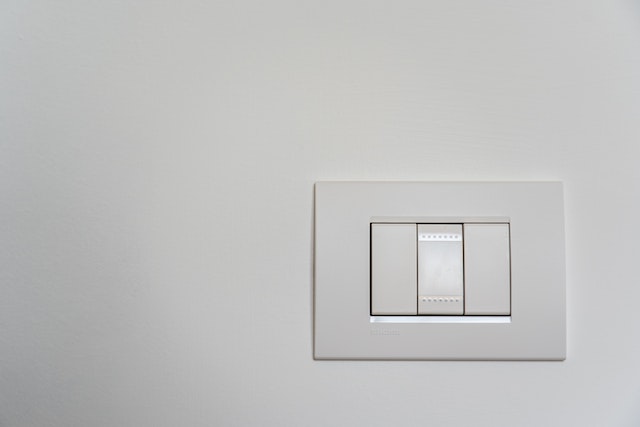Your electricity bill represents more than just basic appliances. Electricity plays a crucial role in keeping your home operational, from keeping food cold to running a security system. Prices can differ across the nation depending on factors you can’t control, such as deregulation in each state that increases competition and offers plans like prepaid electricity.
In addition, the cost of electricity can also vary depending on the time of year and the weather. For example, during the summer months, when air conditioners are in high demand, electricity prices tend to be higher. Similarly, during winter months, when heating is in high demand, electricity prices also tend to be higher.
There are several things you can do to try to reduce your electricity bill. One way is to make sure that your appliances are energy-efficient. You can also try to conserve energy by turning off lights when you leave a room and unplugging appliances when you’re not using them.
You can also try to find a competitive rate by shopping around for a plan from different providers. You can also consider switching to a prepaid plan, which can help you budget your electricity costs; however, the following information will help you understand it further.
Peak Hours
As can be expected, demand for electricity increases during peak hours – particularly in the heat of summer when everyone turns on their air conditioning units to stay cool. Unfortunately, high demand puts undue strain on the power grid and costs more for production during these peak times.
Many electricity providers now offer time-of-use rates that alter the price per kilowatt-hour based on when you use energy – making these plans an effective way to save money by shifting usage during off-peak hours.
Most regions experience their peak electricity demand during the afternoon and early evening, although times can differ depending on your region and utility company. According to this forum – peak hours could occur anywhere from 1 pm to 7 pm during weekday summertime hours and 8 pm to 9 pm during winter periods; certain electric companies offer special off-peak periods specifically dedicated to charging electric vehicle customers during these times.
Homeowners looking to save on electricity prices during peak hours can do so by shifting energy usage away from peak periods and shifting it into off-peak periods, such as scheduling your household appliances like dishwasher, washing machine, and dryer to run during off-peak periods. You could adjust your thermostat during these off-peak periods for increased cooling and more energy efficiency in your home.
Though this might seem challenging for busy families who must leave the house daily to attend work and then return in time for dinner, most people can reduce their electricity prices with small steps over time, leading to considerable cost savings and impactful impact.
Review your utility company’s time-of-use plan with them to gain more insight into your rates. Typically, this will include details regarding peak, standard, and off-peak hours as well as which appliances count towards total monthly consumption and discounts you may qualify for. Ask if there are any special programs for energy-efficient households such as solar PV panels, an EV charger, or battery storage.
Time-Of-Use Rates
Time-of-use rates (TOU) are a relatively new form of rate structure that vary the cost of energy use depending on when consumers consume energy – in an attempt to promote energy efficiency while shifting demand away from times when utilities face additional strain on their power systems. These types of rates encourage energy conservation while relieving strain from their systems when consumers demand too much at certain times of day or year.
Your utility company may provide different TOU rate plan options for residential consumers, including plans that differ according to season and weekday versus weekend and holiday usage patterns. While regional differences exist among TOU plans, their core principles remain universal across the board.
Power production and distribution costs decrease significantly when demand for it is low because utilities don’t need to spend as much on maintaining operational infrastructure at all times, keeping costs under control and optimizing efficiency. When demand for power increases dramatically, however, utilities must invest significantly more to make sure their power systems can accommodate whatever comes their way.
As part of their efforts to address this, many utility companies are offering time-varying rates to promote energy efficiency and lower overall grid demand. While each region and electricity company may use different structures, all utilize an adaptive pricing model that adjusts your cost throughout the day.
TOU rate plans offer the ideal way to save on energy by shifting as much of your electricity usage to off-peak times – such as using appliances like your EV charger (https://www.energysage.com/electricity/house-watts/how-many-watts-does-an-electric-car-charger-use/) during evening or morning hours when rates are reduced, running your dishwasher and laundry during these off-peak periods, etc. By making these simple changes, you can drastically decrease TOU electricity prices while relieving strain from local power grids.
Hourly Pricing
Hourly Pricing offers an alternative to traditional rates that enables you to reduce energy supply costs by shifting usage toward less costly hours of the day. Your savings may differ month by month depending on market conditions and personal energy use habits; since 2007, Hourly Pricing participants have helped reduce emissions by 97,382 tons – equivalent to driving around the globe 9,718 times!
ComEd’s hourly price service rates are determined using real-time prices from the PJM wholesale market, without adding any mark-up costs or making a profit on them. Hourly prices in PJM reflect actual market conditions such as energy demand and supply and regional factors like weather.
Fuel costs have an enormous effect on rates. Since most power plants use natural gas as their source, their price can have a dramatic influence on your electric costs.
Demand can also play an impactful role in rates, particularly on hot weekday afternoons when air conditioner use drives up electricity use and energy prices. Generation capacity plays an essential role – any interruption such as equipment failure can push energy prices higher.
Other factors affecting rates include delivery costs, including operating poles and wires to deliver your electricity. This component is usually the largest part of your bill and is regulated by your public utility commission.
Many electricity bills are determined annually through a “standard offer” process administered by the Public Utilities Commission. Energy suppliers bidding to provide standard offer service depend heavily on expectations for wholesale electricity prices in the coming year, market considerations, and other bid factors in their bids to the PUC. At present, energy suppliers anticipate higher wholesale electricity costs due to rising fossil fuel costs as a result of Russia’s invasion of Ukraine and expect wholesale rates to increase more than in years past.
Variable Rates
The price of electricity fluctuates depending on market conditions, creating different plans with different degrees of risk and rewards depending on your energy use and budget. A fixed-rate plan would offer predictable payments while taking more risks may save money during certain times of the year with variable-rate plans.
An effective way of comparing two plans is comparing their prices for an equivalent amount of energy consumed, but doing this requires digging into your REP’s pricing history which may prove challenging. Finding the beste strøm – strømpris i dag is difficult in a mess of all those numbers. Past prices do not guarantee future rates and it is wise to bear this in mind when making decisions based on past prices alone.
Many factors influence the market price of electricity, including weather and demand. Variable-rate plans may be less expensive than fixed plans when market conditions are favorable; however, as seen during last week’s winter storm, their costs can become far more costly.
At this point, it is crucial to conduct thorough research before purchasing a variable rate plan. Doing your homework will also protect you from being tricked by suspicious sales agents who ask to see your utility bill under the pretenses of “determining eligibility” or “comparing rates”. Unscrupulous salespeople use such tactics frequently and this tactic can be extremely hazardous.
As long as you know how to shop for the ideal variable-rate plan, it should be possible to find affordable options and long-term savings. Consumers who keep an eye on market rates could potentially save hundreds annually with variable rate plans and thousands every few years if they play their cards right.
Consider also that electric utilities frequently adjust the default service prices they charge non-shopping customers, which can have serious repercussions for their electricity bills. To protect themselves against fluctuations, consumers should utilize PUC’s Price to compare features to find the most beneficial options available to them.


